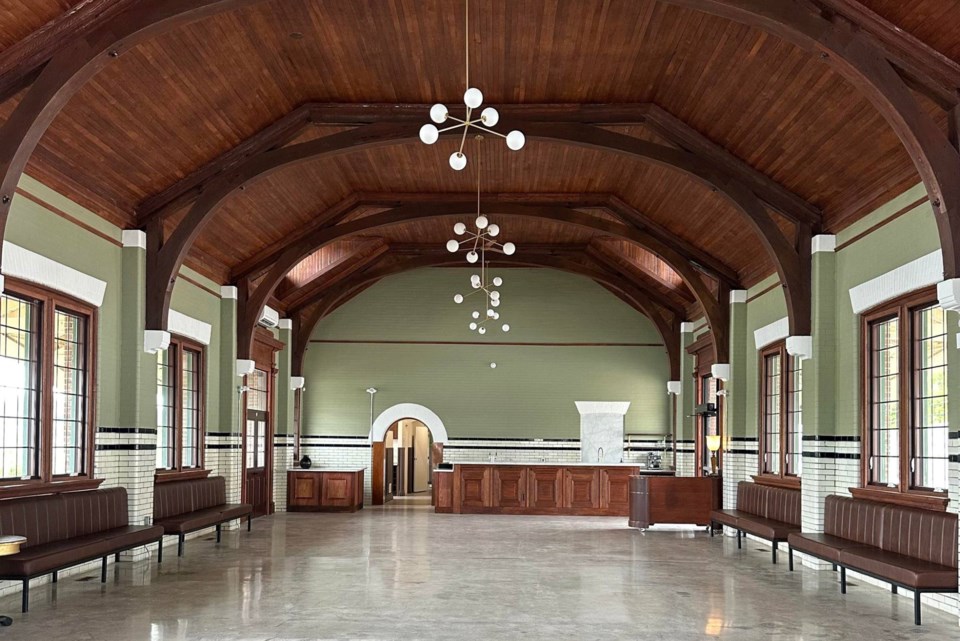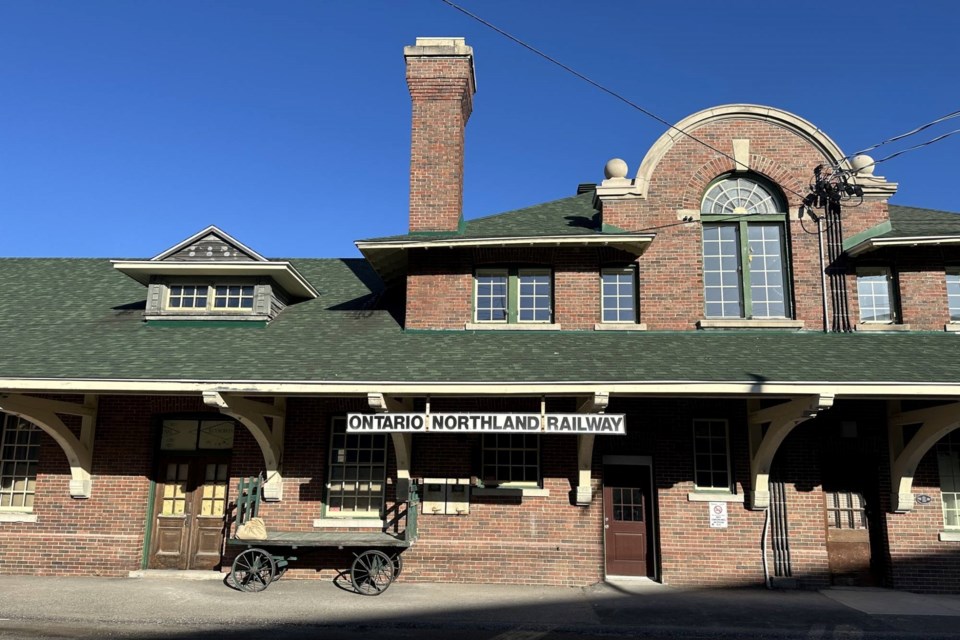The Cobalt Station, a former Ontario Northlander train stop turned event venue with guest suites, has already had several bookings on the heels of its grand reopening in June, 115 years after the Cobalt, Ont, historic landmark originally opened its doors.
“We have two weddings booked for August,” Pamela Hamel, the station’s project lead and event designer, told Northern Ontario Business.
“And we’ve booked two corporate retreats for this year as well. We also recently had an open house with Agnico Eagle.”
Hamel, who owns the event design business Foods by Nature, predicts the success of the station will start a “ripple effect” that will help boost other local businesses, including nearby shops like the Lavender Fox tearoom, and the White Mountain Publications book store.
In addition to being a sought-after wedding venue, Hamel foresees the station’s “urban chic” hybrid event space and rental accommodations drawing a diverse variety of events, including corporate Christmas parties, mining and product showcases, job fairs, business block parties, festivals, and celebrations of life.
“We’re poised to meet the needs of the industrial construction community and the mining industry,” Hamel said. “There’s a lot happening in our region and we’re hoping to be able to partner with [industries] to offer training facilities and meet the needs of the area.”
The station’s seating capacity for a sit-down dinner event is 125, and approximately 200 for a reception. With additional portable washrooms, the venue can accommodate up to 500 people.
The main hall features a newly created bar made from the original station doors. There are also several prep stations for caterers, appetizer stations, an oyster bar, and ample refrigeration. Additional covered areas are available for outdoor events.

The station has two on-site suites that can be rented for up to 30 days. The Parlour Suite, the original train master’s quarters, offers a queen bed, a kitchenette, and 126-inch windows that afford a scenic view of the town.
The Parlour Suite also opens through double doors to the main hall, making it the perfect dressing room and dramatic entrance for brides. It can also be used as a separate “speakeasy room” or lounge at parties.
The Coach Suite, the original freight or baggage room, is outfitted to offer accommodation for a small group, with patio access, a full kitchen, and laundry facilities.
“The Coach Suite was designed for someone interested in the landscape, whether for adventuring or geology,” said Hamel.
“We had an original geology map reproduced as a poster. It gives people a sense of the land and the landscape.”
The suites were part of the main focus of renovations to the station, which began over 10 years ago.
The station was purchased in 2015 by Mel Peddie, owner of the Temiskaming Shores contracting business WB Melback Corporation. It was subsequently put up for sale in 2023.
After interest from a string of businesses, Peddie decided to develop the business potential himself. In April 2024, Peddie asked Hamel to be the brand developer and lead designer of the station.

Respecting the station’s status as an iconic northern landmark during the renovations was important to Peddie and Hamel.
The building was registered under the Ontario Heritage Trust in 1993 after being designated under the Ontario Heritage Act in 1979, which mandates the maintenance of the original architecture.
Restorations started with the ceiling, which was painted to match the original colour. The windows were also custom-made to preserve the original aesthetic, and the original terrazzo floors underwent extensive cleaning and restoration.
Peddie and Hamel prioritized hiring as many local tradespeople and craftspeople as possible for the renovations.
“It opened our eyes as to what is available here in terms of carpentry, trades, and manufacturing,” Hamel said.
“All of our custom stonework and mouldings were done by Lauzon Stoneworks. We had Three H Furniture make all our tables. We also created four long banquet sections that were crafted with the help of Lew’s Upholstery.”
The station was originally built in 1910 for the Northern Ontario Railway by world-class Irish-Canadian architect John M. Lyle, during the peak of his career and mastery of the Beaux Arts style.
Lyle trained as an architect at Yale University and at École des Beaux-Arts in Paris, and completed many iconic Canadian projects during his career, including the Royal Alexandra Theatre in Toronto (1906), and Toronto’s Union Station (1913-1927).
According to The Canadian Encyclopedia, designs Lyle submitted to the Dominion Coin Competition in 1936 influenced the animal and leaf motifs on Canada’s coinage.
The one-and-a-half-storey brick building offers a stunning example of Lyle’s interpretation of Canadian architectural style, drawing inspiration from English and French colonial design.

According to the Ontario Heritage Trust Website, the station’s “impressive roof is pierced by pedimented dormers and a central block Flemish gable that breaks the roofline and signifies the main entrance as well as the former station master’s office.”
The station’s pristine Edwardian lines, including the “massive timber roof trusses” and wooden ceiling, make it a unique must-see not only for local history enthusiasts but also for those interested in Canadian architecture.
“When you look at the architecture, you know it means something,” said Hamel. “There was so much intention put into the design that you can’t help but fall in love with it.”
The station was a former hub for visiting businessmen from all around the world, as well as passengers travelling to Cobalt in the town’s heyday during the early 20th century mining boom.
“The station was that first meeting and welcoming place for people. So much silver was shipped out of there. Goods and materials were received through that very building,” Hamel said.
The station continued to function until its closure in 2012 with the cancellation of the Northlander passenger train.
For the future, Hamel hopes to continue to build a network of supporters for the station in the community and beyond.
“We’re here now for many decades to come,” said Hamel, “And uniquely positioned with the coolest urban vibe in the n.”




